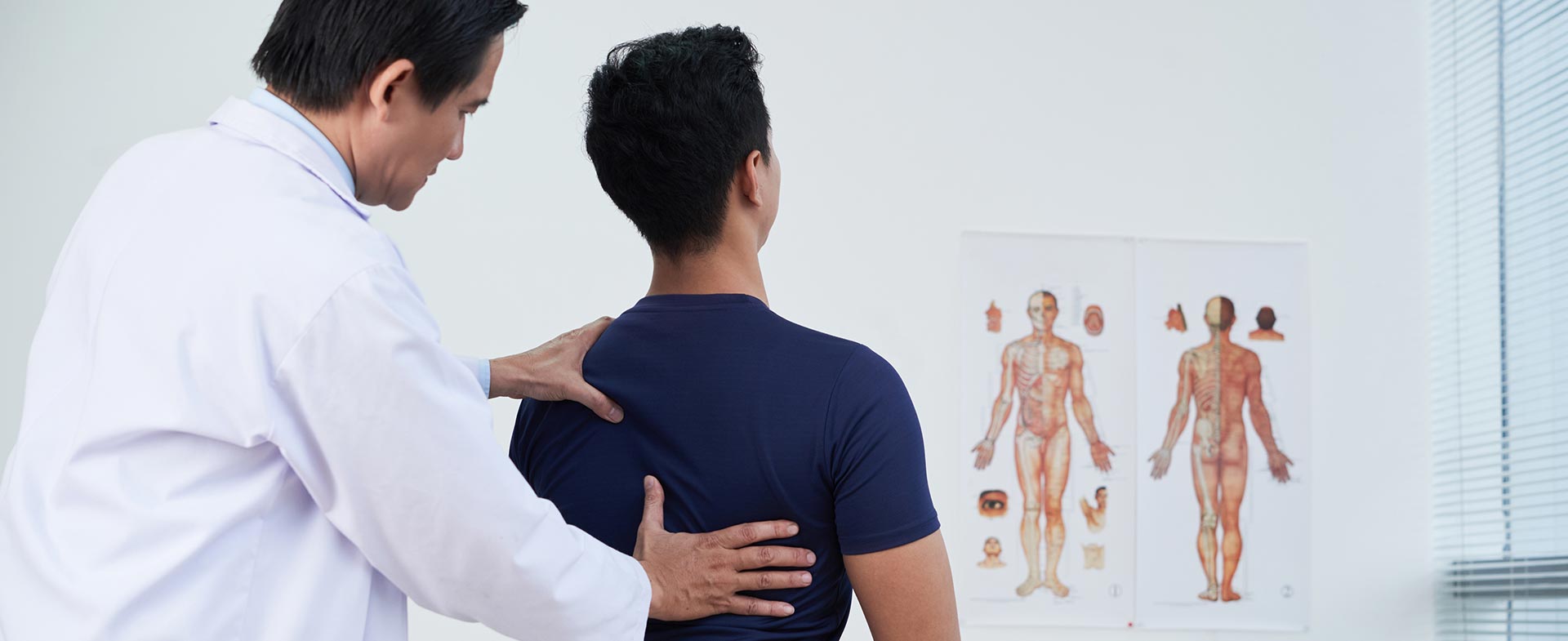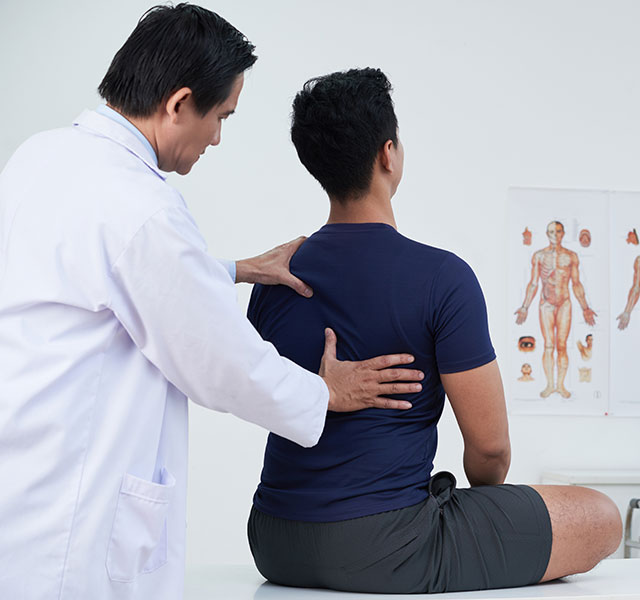When you think of scoliosis, you may picture an adolescent child. And while it’s true that adolescent idiopathic scoliosis is the most common form of the condition, it’s not the only one.
“Scoliosis is basically a curvature of the spine, and that can happen for various reasons at any time of life,” says Kevin Taliaferro, M.D., an orthopedic spine surgeon at Henry Ford Health. The good news is that scoliosis can be as effectively treated in adults as it is in adolescents.
What Is Scoliosis?
Scoliosis refers to a type of curvature in the spine. Typically, scoliosis creates an S- or C-shaped sideways curve.
A curvature can be present at birth, develop during the adolescent growth phase or become problematic in later adulthood. Whenever it occurs, a curvature can lead to pain and limited mobility.
What Causes Scoliosis In Adults
“In adults, we most commonly see degenerative scoliosis,” says Dr. Taliaferro. “As we get older, we accrue wear and tear on the spine that can eventually lead to scoliosis.”
This type of scoliosis—especially in adults over age 60—commonly occurs along with osteoporosis. Having one condition doesn’t necessarily cause the other. But having osteoporosis and scoliosis can make both conditions worse.
“It’s really important to effectively manage osteoporosis if you also have scoliosis,” says Dr. Taliaferro. “When osteoporosis isn’t well treated, it can lead to fractures in the spine.” A healthy spine looks like a tower of square blocks. But one with fractures starts to look more like a tower of triangles. “And if you’ve ever tried to stack triangles, you know they don’t stack straight,” he adds. Instead, the tower—or in this case your spine—starts to curve.
In some cases, you can end up with both idiopathic and degenerative scoliosis later in life. You may have had a version in adolescence that was so mild it went undiagnosed and didn’t need treatment. But as you age and the spine begins to deteriorate a bit, the original curvature suddenly becomes problematic.

Back And Spine Care At Henry Ford
What Are Signs Of Scoliosis In Adults?
“People typically come in to see the doctor because they’re experiencing pain and loss of function,” says Dr. Taliaferro. “As the spine curves, it makes it more difficult to stand upright and to walk for longer periods of time.”
That curve causes your body to fall forward, and you lose the ability to move efficiently. Suddenly, you might find that you need to use an incredible amount of energy just to walk for a few minutes.
Your spine isn’t just there to keep your body upright. It also functions as a protective structure around your spinal nerves. A spinal deformity can pinch those nerves and lead to leg pain and numbness.
Treatment For Adult Scoliosis
Unlike adolescents with scoliosis, adults with the condition are no longer growing. That changes how scoliosis gets treated. In teenagers, the goal is to manage the curvature and guide the spine back into normal alignment as it grows.
For an older adult with degenerative scoliosis, the goals of treatment are different. “We look for ways to manage pain and improve mobility and function,” says Dr. Taliaferro. In many cases, treatment doesn’t require surgery.
If there’s no instability in the spine, the best treatments are nonsurgical methods that decrease pain and reduce inflammation. These could include:
- Oral anti-inflammatory medication (NSAIDS)
- Anti-inflammatory injections
- Nerve blocks (injections into nerves to block pain)
- Radiofrequency ablation (to destroy spinal nerve endings causing pain)
To help improve your mobility and function, you may also work with a specialized physical therapist. They can teach you safe and effective ways to strengthen your back and core.
“Surgery is generally a last step that we use only if no other treatments work for you,” says Dr. Taliaferro. For those who need it, having surgery to stabilize and realign the spine with rods and screws is an effective way to regain mobility and function.
Back pain is one of the most common complaints that brings adults into their doctor’s office. And although only a small percentage of back pain is caused by scoliosis, it’s important to see your doctor for evaluation if back pain is interfering with your everyday life and activities.
Reviewed by Dr. Kevin Taliaferro, an orthopedic surgeon who sees patients at Henry Ford Hospital. Henry Ford West Bloomfield Hospital Clinics and Henry Ford Medical Center - Taylor.



